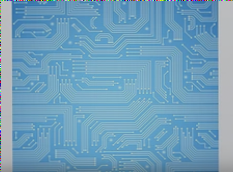In the PCB manufacturing process, encountering defective products is unavoidable, often due to machine errors or human factors. For instance, an abnormal condition known as a “rupture state” may arise, with the specific cause requiring detailed analysis.
When the rupture manifests as a point-like distribution rather than a complete circular open circuit, it is referred to as a point-shaped rupture, sometimes called a “wedge-shaped rupture.” This issue commonly stems from improper handling during the slag removal process. During PCB processing, the slag removal begins with a leavening agent, followed by corrosion with the strong oxidant “permanganate.” This method effectively removes slag while creating a microporous structure. The residual oxidant from this removal process is eliminated using a reducing agent, typically through an acidic solution.
Once the adhesive residue is treated, the issue of leftover glue is resolved; however, monitoring the reducing acid solution is often overlooked. This oversight can lead to oxidant residue remaining on the walls of the holes.

1. After the circuit board undergoes the chemical copper process, it will experience micro-etching treatment following the processing of the pore-forming agent. At this stage, the remaining oxidant is soaked in acid to strip the resin from the oxidant residue area, effectively destroying the pore-forming agent.
2. The damaged pore walls will not participate in the subsequent palladium colloid and chemical copper treatments, resulting in these areas showing no copper deposition. Without a solid foundation, the electroplated copper will fail to cover completely, leading to dot-shaped holes and breakage. Many circuit board manufacturers encounter this issue during processing. Greater attention to monitoring the potion in the reduction step of the de-smear process could help mitigate this problem.
3. Every stage of PCB circuit board processing demands strict control, as chemical reactions can occur slowly in overlooked corners, potentially compromising the entire circuit. Vigilance is essential in this puncture-prone state.
4. The bare board (without components) is commonly known as a “Printed Wiring Board (PWB).” The board’s base is made from materials that are insulated, heat-resistant, and flexible. The visible circuit material on the surface is copper foil, which initially covers the entire board but is partially etched away during manufacturing, resulting in a net-like circuit pattern. These lines are referred to as conductor patterns or wiring, facilitating circuit connections for components on the PCB.
5. Typically, the PCB’s color is green or brown, corresponding to the solder mask. This insulating protective layer safeguards the copper traces, prevents short circuits during wave soldering, and reduces solder usage. A silk screen is printed on the solder mask, usually featuring white text and symbols to denote the position of each component on the board. This printed surface is also known as the legend surface.
6. Once the final PCB product is completed, integrated circuits, transistors, diodes, passive components (such as resistors, capacitors, connectors, etc.), and various other electronic parts are mounted. This interconnection through wiring allows for the formation of electronic signal connections and the realization of functional applications.
When the rupture manifests as a point-like distribution rather than a complete circular open circuit, it is referred to as a point-shaped rupture, sometimes called a “wedge-shaped rupture.” This issue commonly stems from improper handling during the slag removal process. During PCB processing, the slag removal begins with a leavening agent, followed by corrosion with the strong oxidant “permanganate.” This method effectively removes slag while creating a microporous structure. The residual oxidant from this removal process is eliminated using a reducing agent, typically through an acidic solution.
Once the adhesive residue is treated, the issue of leftover glue is resolved; however, monitoring the reducing acid solution is often overlooked. This oversight can lead to oxidant residue remaining on the walls of the holes.

1. After the circuit board undergoes the chemical copper process, it will experience micro-etching treatment following the processing of the pore-forming agent. At this stage, the remaining oxidant is soaked in acid to strip the resin from the oxidant residue area, effectively destroying the pore-forming agent.
2. The damaged pore walls will not participate in the subsequent palladium colloid and chemical copper treatments, resulting in these areas showing no copper deposition. Without a solid foundation, the electroplated copper will fail to cover completely, leading to dot-shaped holes and breakage. Many circuit board manufacturers encounter this issue during processing. Greater attention to monitoring the potion in the reduction step of the de-smear process could help mitigate this problem.
3. Every stage of PCB circuit board processing demands strict control, as chemical reactions can occur slowly in overlooked corners, potentially compromising the entire circuit. Vigilance is essential in this puncture-prone state.
4. The bare board (without components) is commonly known as a “Printed Wiring Board (PWB).” The board’s base is made from materials that are insulated, heat-resistant, and flexible. The visible circuit material on the surface is copper foil, which initially covers the entire board but is partially etched away during manufacturing, resulting in a net-like circuit pattern. These lines are referred to as conductor patterns or wiring, facilitating circuit connections for components on the PCB.
5. Typically, the PCB’s color is green or brown, corresponding to the solder mask. This insulating protective layer safeguards the copper traces, prevents short circuits during wave soldering, and reduces solder usage. A silk screen is printed on the solder mask, usually featuring white text and symbols to denote the position of each component on the board. This printed surface is also known as the legend surface.
6. Once the final PCB product is completed, integrated circuits, transistors, diodes, passive components (such as resistors, capacitors, connectors, etc.), and various other electronic parts are mounted. This interconnection through wiring allows for the formation of electronic signal connections and the realization of functional applications.




